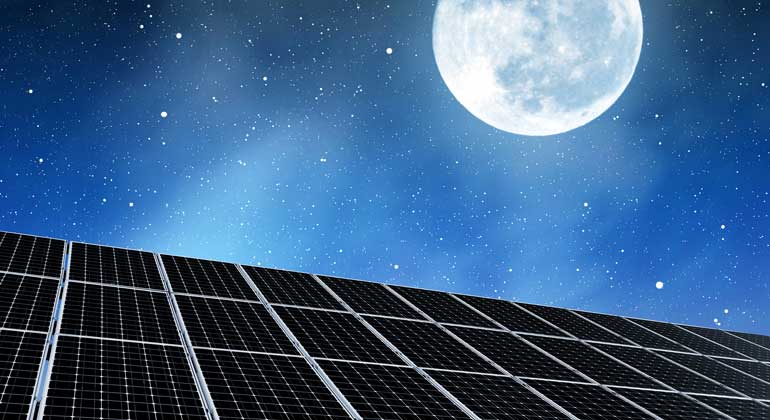Stanford engineers invent a solar panel that generates electricity at night
Radiative cooling might reduce the need for costly batteries in some applications
The skies above Stanford, California, were unusually clear for several nights last October.
That was good news for researcher Sid Assawaworrarit and his colleagues. Those conditions were “probably the best of the year,” he tells IE.
Assaworrarit isn’t an astronomer grateful that clouds didn’t block starlight from traveling through the atmosphere and reaching the mirror of his telescope. An electrical engineer, he welcomed the cloudless nights for an entirely different reason: a clear night means infrared light from the surface of solar panels can freely radiate out into space.
That flow of energy enables the device Assaworrarit and his colleagues created — an ordinary solar panel outfitted with a thermoelectric generator — to generate a small amount of electricity from the slight difference in temperature between the ambient air and the surface of a solar panel pointed deep into space.
At night, solar panels turn the table and emit photons
The new technology takes advantage of a surprising fact about solar panels.
“During the day, there’s a light coming in from the Sun and hitting the solar cell, but during the night, something of a reverse happens,” Assawaworrarit says.
That’s because solar panels — like everything warmer than absolute zero — emit infrared radiation.
“There’s actually light going out [from the solar panel], and we use that to generate electricity at night. The photons going out into the night sky actually cool down the solar cell,” he says.
As those photons leave the skyward surface of the solar panel, they cary heat with them. That means that on a clear night — when there are no clouds to reflect infrared light back toward the Earth — the surface of a solar panel will be a few degrees cooler than the air around it. That temperature differential is what Assawaworrarit and his colleagues are taking advantage of. A device called a thermoelectric generator can capture some of the heat flowing from the warmer air to the cooler solar panel and convert it into electricity.
On a clear night, the device Assawaworrarit tested on the Stanford rooftop generates roughly fifty milliwatts for every square meter of solar panel (50 mW/m2).
“I think that’s probably a record number,” he says. But Assawaworrarit and his team aren’t stopping there. He says that with a couple of improvements (and in a good location) such a device could generate twice that amount of electricity.
“The theoretical limit is probably about one or two watts per square meter,” he says. “That’s not a huge number, but there are a lot of applications” where that kind of energy at night would come in handy.
For instance, a large fraction of the world’s population — roughly a billion people — don’t have access to an electrical grid. People living in that situation “can rely on solar during the day, but at night there’s that not much they can do,” he says. Unlike batteries that degrade substantially after a few thousand charge cycles, the kind of thermoelectric generators used in these solar panels are solid state, “so the lifetime is pretty much forever,” he says.
Another good use for the technology is powering the immense network of environmental sensors researchers use to keep tabs on everything from weather conditions to invasive species in far-flung corners of the globe. Again, solar panels that generate a small amount of electricity at night could reduce the need for batteries — and the maintenance and replacement costs they incur.
“If you can get up to a watt per square meter, it would be very attractive from a cost perspective,” Assawaworrarit says.








